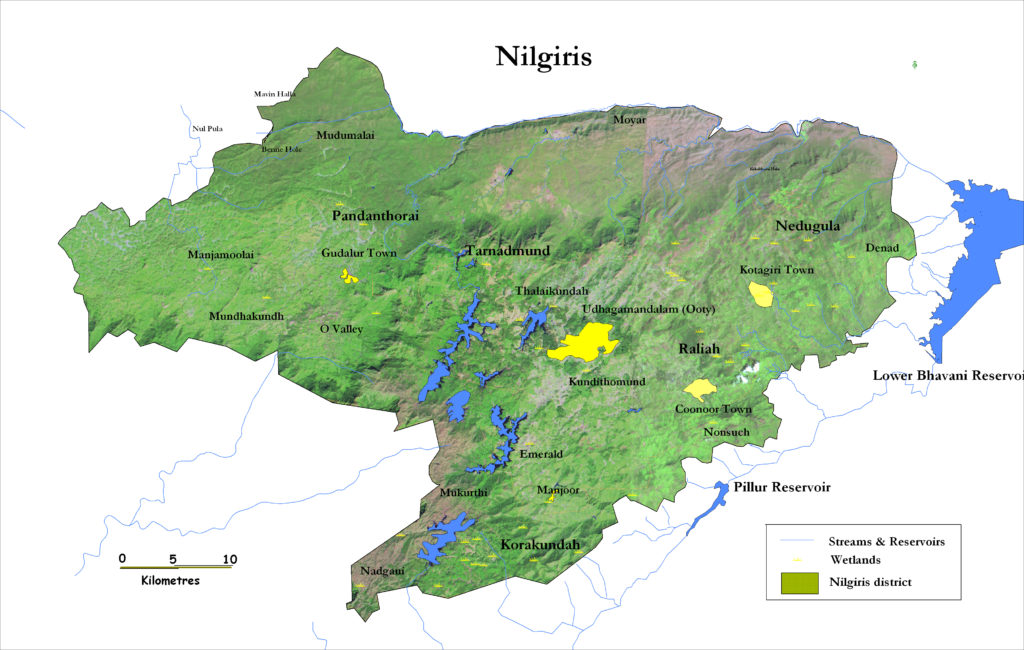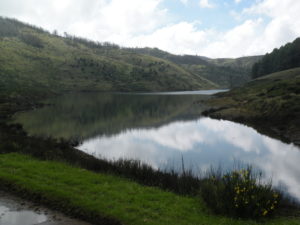Water Quality and Sources of the Nilgiris
The Blue Mountains are significant for their water sources found throughout the hills. They are not only a crucial drinking source for the local people and wildlife but also serve as major sources of river basins for Tamil Nadu, Karnataka, and Kerala. More specifically, the Nilgiris district has four basins, being – The Moyar Basin, which supplies 24 with water and this water is a major supplies to irrigation and drinking water for Tamil Nadu. The Bhavani Basin, which supplies 26 rivers with water and flows all the way to the plains of Tamil Nadu. The Kabani Basin has 5 major rivers that eventually drain into Karnataka and finally the Chaliyar Basin has 8 major rivers that flow into Kerala. The first two basins will eventually feed into the Cauvery River Basin.
Needless, there are many people and ecosystems that depend on these waters for survival, agricultural economies and plantations, wildlife sustainability, and more. For example, there are vast tea estates in the Nilgiris that rely on an abundance of water while at the same time there are a multitude of indigenous communities that roam these hills and need the waters to support their livelihoods.
One specific kind of water source in the Nilgiris that is especially significant are the wetlands. These, along with streams, will continue to provide a steady supply of water to rivers, even after the monsoon season has passed and there is no more rains supplying water. This is due to the phenomenon of groundwater, in which a visible source of water known as an aquifer will emerge to the surface and supply water, and this becomes wetlands or streams. Thus, wetlands ensure that water is available year round as well as reduce the changes of potential flooding. They also play a multitude of other roles, such as supporting biodiversity and cleaning other water sources of pollutants.
Yet, even with the fact that these water sources are critical, they are being tampered with severely, which will lead to a lot of concerning consequences. For example, with the increase of tea plantations and other commercial farms this has also led to an increased use of pesticides and fertilizers, which ultimately flows into these water sources. This is causing an abundance of harm, such as increasing water borne and skin disease for indigenous communities who rely on these waters as a direct drinking source. Land use change also increase soil erosion and the dramatic reduction in rainfall has even been connected to the destruction of forests and marshes at a large scale. When wetlands shrink or dry up, then invasives such as Lantana start to invade the land even more.
It is imperative to conserve the multitude of water sources in the Nilgiris, from wetlands to streams to aquifers and more. Without these water sources and their variety of forms many will suffer; not only the local people and environment but so too will surrounding communities and states. There used to be a variety of governance and resource sharing of water among the various Indigenous communities yet this has since changed with the implementation of government schemes. With a rapidly changing world, both socially and environmentally, and even to the small area of the Nilgiris district, we need to better understand and protect these water sources. The effort may be time intensive and great, yet the need for and reliance upon water is far greater. Please refer to the Nilgiri Water Portal for more information.








